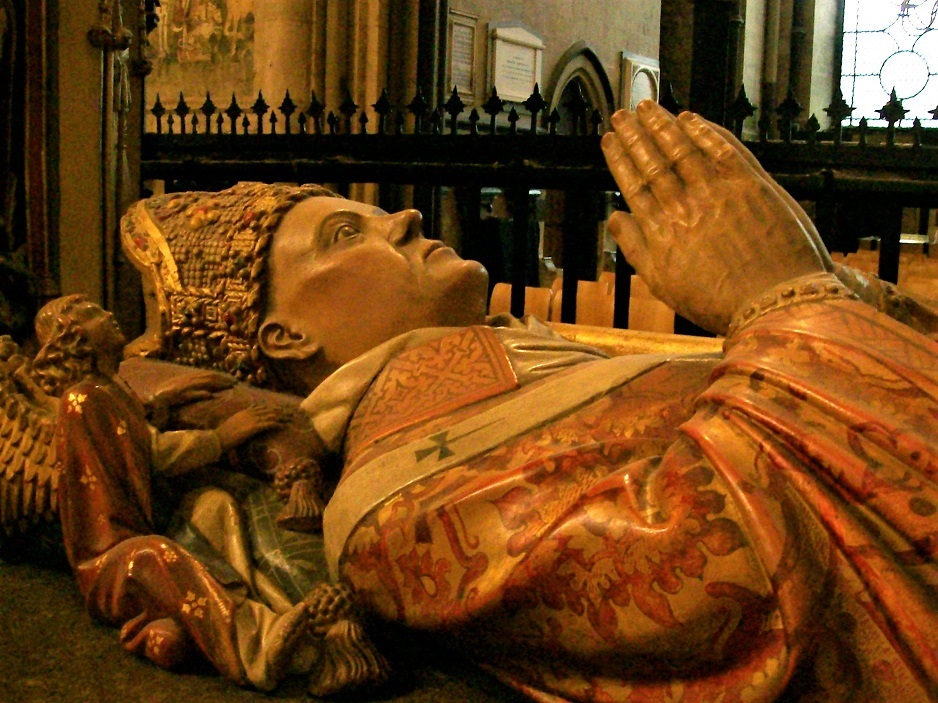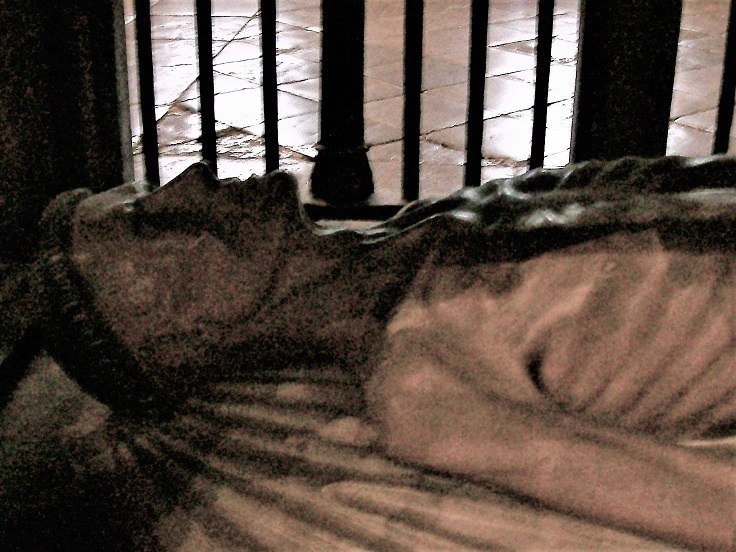Henry Chichele
Dec. 19th, 2018 08:28 amHenry Chichele (pronounced as though there were a "y" at the end) came from nowhere to become one of the most powerful men of his age- an international statesman and diplomat who served as Archbishop of Canterbury under Henry V and VI. Think of him as the Kissinger of his generation. He was obviously very good at what he did- also, I suppose, very charming, though you wouldn't think so from his effigy.
His monument is two tiered- showing him in archiepiscopal robes on top and as a naked cadaver below. The scholars call these things transi tombs- and Chichele's is one of the earliest- and finest examples. The fellows of All Souls, Oxford- which Chichele founded- keep it in spectacularly good condition.
It was very dark in the cathedral yesterday and I've had to process and re-process my picture of the cadaver to get it to show anything at all. But, then, these objects are never easy to see and weren't meant to be.


An inscription under the cadaver (translated from the original Latin) reads, ‘I was a pauper born, then to primate here raised, now I am cut down and served up for worms. Behold my grave. Whoever who may be who will pass by, I ask for your remembrance.’
His monument is two tiered- showing him in archiepiscopal robes on top and as a naked cadaver below. The scholars call these things transi tombs- and Chichele's is one of the earliest- and finest examples. The fellows of All Souls, Oxford- which Chichele founded- keep it in spectacularly good condition.
It was very dark in the cathedral yesterday and I've had to process and re-process my picture of the cadaver to get it to show anything at all. But, then, these objects are never easy to see and weren't meant to be.


An inscription under the cadaver (translated from the original Latin) reads, ‘I was a pauper born, then to primate here raised, now I am cut down and served up for worms. Behold my grave. Whoever who may be who will pass by, I ask for your remembrance.’

